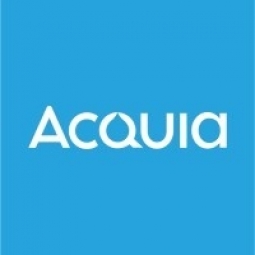Technology Category
- Functional Applications - Enterprise Resource Planning Systems (ERP)
- Platform as a Service (PaaS) - Application Development Platforms
Applicable Industries
- Buildings
- Retail
Applicable Functions
- Product Research & Development
- Sales & Marketing
Use Cases
- Inventory Management
- Time Sensitive Networking
Services
- Cloud Planning, Design & Implementation Services
- System Integration
About The Customer
nVent is a $2.5B global electrical company known for its innovation, quality, and reliability. The company's products connect, protect, and consistently deliver value to industrial, commercial, residential, energy, and infrastructure projects. As a holding company, nVent has three core business segments and over 10 established brands. The company decided to migrate all of its websites to a single, unified Drupal platform after struggling with the costs and complexities associated with managing its brands across disparate, proprietary content management and commerce systems.
The Challenge
nVent, a global electrical company, was grappling with the costs and complexities of managing its brands across multiple, proprietary content management and commerce systems. The company aimed to consolidate a dozen legacy websites onto a single enterprise platform to streamline management and improve customer experience. However, the company faced tight deadlines due to costly, expiring licensing and support agreements with legacy platform providers. Therefore, nVent needed a scalable, reliable, and secure solution that could be implemented quickly.
The Solution
nVent partnered with digital product agency Phase2 to guide its digital transformation. Phase2 was tasked with creating a contextually relevant experience based on regionality, language, and interest, while improving product discoverability, driving self-service, and increasing revenue. After understanding nVent’s challenges and company culture, Phase2 prioritized the business goals and timelines. The team evaluated and documented nVent’s existing tech stack and data source, aligning on a user experience, technical architecture, and agile development process. The solution included the integration of Acquia tools, third-party products, and back office systems, enabling self-service and quote generation. A low-code environment was implemented, allowing nVent’s non-technical administrators to easily manage and maintain relevant, timely content. The solution also focused on providing a great search experience and automating much of the custom product configuration process and inquiries.
Operational Impact
Quantitative Benefit

Case Study missing?
Start adding your own!
Register with your work email and create a new case study profile for your business.
Related Case Studies.

Case Study
Energy Saving & Power Monitoring System
Recently a university in Taiwan was experiencing dramatic power usage increases due to its growing number of campus buildings and students. Aiming to analyze their power consumption and increase their power efficiency across 52 buildings, the university wanted to build a power management system utilizing web-based hardware and software. With these goals in mind, they contacted Advantech to help them develop their system and provide them with the means to save energy in the years to come.

Case Study
Intelligent Building Automation System and Energy Saving Solution
One of the most difficult problems facing the world is conserving energy in buildings. However, it is not easy to have a cost-effective solution to reduce energy usage in a building. One solution for saving energy is to implement an intelligent building automation system (BAS) which can be controlled according to its schedule. In Indonesia a large university with a five floor building and 22 classrooms wanted to save the amount of energy being used.

Case Study
Improving Production Line Efficiency with Ethernet Micro RTU Controller
Moxa was asked to provide a connectivity solution for one of the world's leading cosmetics companies. This multinational corporation, with retail presence in 130 countries, 23 global braches, and over 66,000 employees, sought to improve the efficiency of their production process by migrating from manual monitoring to an automatic productivity monitoring system. The production line was being monitored by ABB Real-TPI, a factory information system that offers data collection and analysis to improve plant efficiency. Due to software limitations, the customer needed an OPC server and a corresponding I/O solution to collect data from additional sensor devices for the Real-TPI system. The goal is to enable the factory information system to more thoroughly collect data from every corner of the production line. This will improve its ability to measure Overall Equipment Effectiveness (OEE) and translate into increased production efficiencies. System Requirements • Instant status updates while still consuming minimal bandwidth to relieve strain on limited factory networks • Interoperable with ABB Real-TPI • Small form factor appropriate for deployment where space is scarce • Remote software management and configuration to simplify operations

Case Study
Powering Smart Home Automation solutions with IoT for Energy conservation
Many industry leaders that offer Smart Energy Management products & solutions face challenges including:How to build a scalable platform that can automatically scale-up to on-board ‘n’ number of Smart home devicesData security, solution availability, and reliability are the other critical factors to deal withHow to create a robust common IoT platform that handles any kind of smart devicesHow to enable data management capabilities that would help in intelligent decision-making









